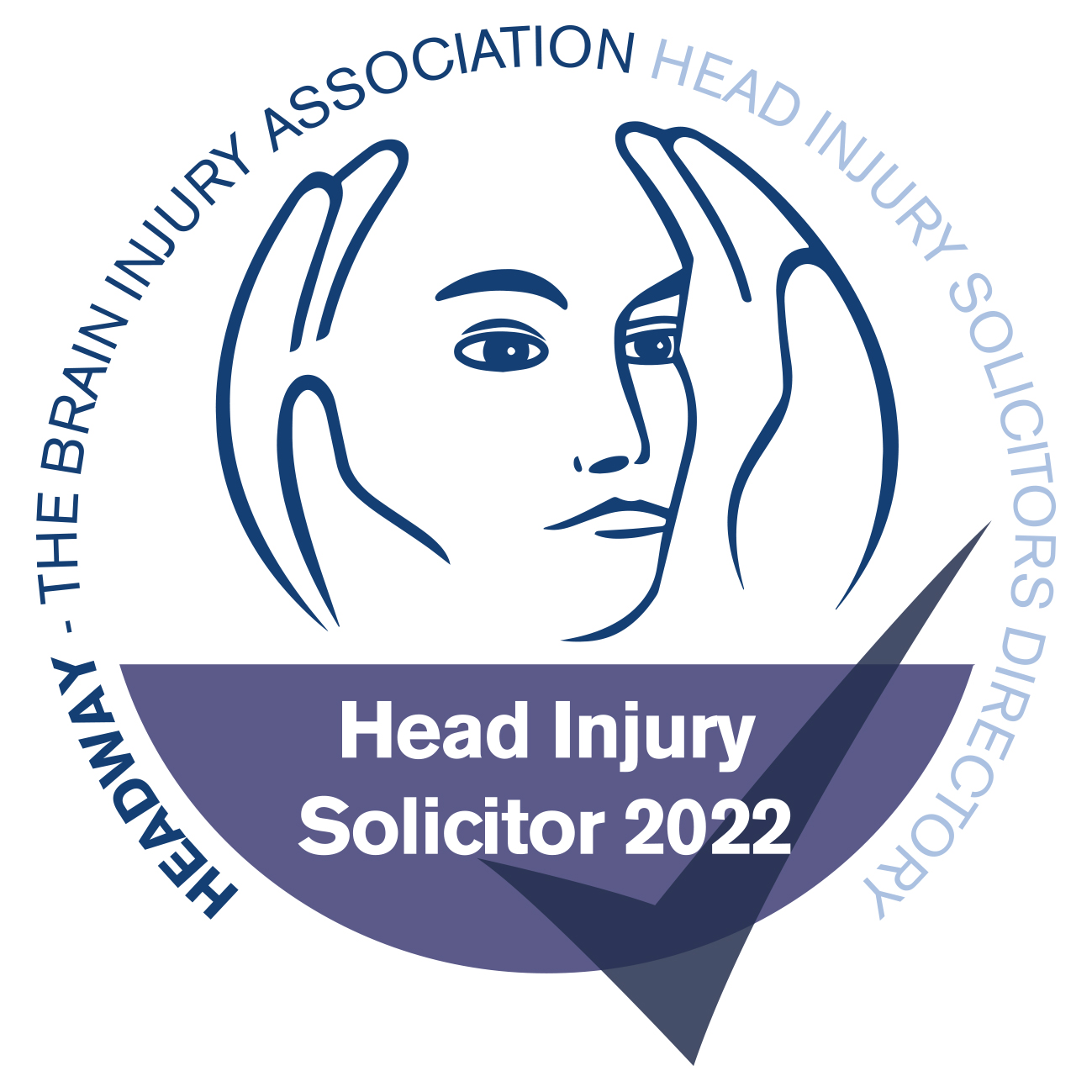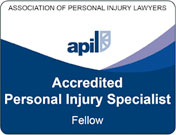Orthopaedic Injuries Caused by Clinical Negligence
Our specialist solicitors are here to help you claim compensation if you have suffered an orthopaedic injury as a result of clinical negligence.
At Potter Rees Dolan, we have a full team of highly qualified clinical negligence solicitors who have experience in dealing with a wide range of negligence claims. We understand that victims of orthopaedic injuries and their families must now deal with a host of new and unfamiliar obstacles in their lives, which is why our team works to make the claims process as quick and easy as possible, and will help you understand if you are entitled to compensation.
For free initial advice and access to a team of Manchester-based solicitors who will put your best interests first at all times, call Potter Rees Dolan on 0800 027 2557. Alternatively, you can contact us by filling out our online contact form, and we will get back to you.
What is an orthopaedic injury?
Orthopaedics is the term used to describe the branch of medicine concerned with conditions involving the body’s musculoskeletal system.
A serious orthopaedic injury can be life-changing, potentially leading to complete loss of feeling or permanent paralysis.
As a result, if you suffered a musculoskeletal injury during surgery or there has been a failure to properly treat your orthopaedic injury in hospital, you could make a claim for compensation. This will help ease the financial burden placed on you in the aftermath of the injury.
How do orthopaedic injuries occur?
Common causes of serious orthopaedic injury include:
- Falls or other injuries at home or work that damage your bones or joints, and which are not then appropriately managed by the hospital
- Poorly managed hip and knee replacement procedures - including failed hip replacements - leading to further surgery, bone loss and ongoing mobility issues
- Spinal fractures that are missed on X-ray, resulting in permanent disability
- Fractures of the scaphoid, humerus or shoulder that are not treated properly
- When types of surgery such as discectomy, laminectomy, fusion, Wallis ligament surgery and disc prosthesis go wrong
What other sorts of damage can be associated with orthopaedic injury?
Potential complications of orthopaedic injuries include:
- Spinal cord injury, leading to paralysis
- Damage to arteries during surgery, leading to compartment syndrome
- Amputation of limbs
- Permanent bony deformity affecting mobility and/or dexterity
How can I pursue a clinical negligence claim for an orthopaedic injury?
Our team of dedicated solicitors will work tirelessly to gain the best possible result for you, not only in terms of helping you when making your claim, but also by providing advice and support throughout the process.
We will:
- investigate your case and the evidence surrounding it
- work out how much compensation you should receive based on the circumstances of your case
- negotiate with relevant third parties on your behalf
- represent you in court if required
- provide you with ongoing advice and support, even after your case has ended
We will also help you seek rehabilitation for your condition, ensuring that you get the expert help you need.
Why choose Potter Rees Dolan?
Potter Rees Dolan’s clinical negligence team is known as one of the best in the UK, with more than 100 years of combined experience in serious injury law and comprehensive medical insight.
Helen Dolan, head of the department, was praised by the Chambers 2019 legal guide for the way she “regularly handles complex claims”,with one source saying: “Her attention to detail and knowledge of the case inside and out was exemplary.”
The same publication said team member Lesley Herbertson “is very good on the complex details of the case and is able to translate this to clients", while colleague Gill Edwards was described as being "incredibly good with clients - they really warm to her - and very good on the medical details".
The Chambers 2019 guide also offered praise for our clinical negligence team as a whole, calling it a “well-regarded team with an impressive caseload of complex clinical negligence work” and citing sources that highlight the "really nice, bespoke, high-quality" service we have to offer.
Our clients regularly tell us that our focus on empathy and care sets us apart. We specialise in serious and catastrophic injuries, so we know how difficult it can be to live with severe disability or illness, and will work to make the claims process as stress-free as possible.
Funding
The majority of clinical negligence cases are funded through “no win, no fee” arrangements, also known as Conditional Fee Agreements. We can investigate your potential claim and you will not have to pay any costs if the case is not successful; the details of how this arrangement works will be explained to you during our first meeting.
If you already have a legal expense insurance policy in place, we will always start by looking into whether you can use this policy before considering whether a Conditional Fee Agreement is more appropriate.
What happens next?
Initially, we will discuss your circumstances, helping you to understand whether your case can be progressed. If we agree that it can, we will help you collate all the evidence required to build a strong case, in order to give you the best chance of recovering the right amount of compensation.
We will begin by collecting all relevant medical records and will go through these with you. We then instruct relevant independent medical experts to advise on whether or not you or your family member has received substandard treatment. When the supportive expert evidence has been collected, we will begin court proceedings and progress the claim as quickly as possible.
Contact us today
To find out if you are eligible to make an orthopaedic injury claim, call our team of solicitors, based in Manchester, today on 0800 027 2557, or simply complete our online contact form.
Useful Information
Disc Protrusion
This protrusion, or bulge, can occur anywhere along the length of the spinal column from the neck (cervical spine) to the lower back (lumbar spine).
If the pain is in the lower back (lumbar spine), leg or the groin, this could be irritation on the disc itself or irritation of the nerves next to the spine.
When the slipped disc presses on a nerve in the lumbar
The causes of disc protrusion or a slipped disc are when the outer case of the disc
Age can sometimes play a part as the spinal discs start to lose their water content which makes them more flexible.
Recovery from a slipped disc can take around four to six weeks with treatment usually including a combination of physical therapy and medication.
In many cases, a slipped disc will eventually shrink back away from the nerve and the pain will ease as the disc stops pressing on the nerve.
Girdlestone Procedure
This is an operation, also known as resection arthroplasty of the hip, which involves removing part of the ball of the thigh bone (femur).
This allows it to fuse with the hip socket (acetabulum) into the straight leg position.
The patient's leg is then left straight as it cannot bend at the hip, meaning the hip is stiff but pain-free.
The procedure was named after Gathorne Girdlestone, a professor of
Laminectomy
This is one of the most common back surgeries where a surgeon removes the rear portion of one or more spinal bones (vertebrae).
Ligaments and bones that are pressing on the nerves may be removed at the same time during surgery.
People with arthritis in their spine can sometimes develop bony overgrowths within the spinal canal which can cause the pressure.
As with any form of surgery, there can be complications during a
- Bleeding,
Infection blood clots,- Nerve injury
Most people who undergo a
Microdiscectomy
This is a form of spinal surgery to decompress the spine using a microscope to view the spine and the lumbar disc.
A small portion of the bone over the nerve root is removed to relieve neural impingement and to provide the nerve with more room to heal.
Compression of the spine can cause substantial leg pain and a
The success rate of a
In any spinal surgery, there is the risk of a
Scaphoid Fracture
The scaphoid bone is one of the carpal bones around the area of the wrist. Fractures of
Scaphoid fractures are
If there has been some movement of the bone fragment(s), the scaphoid bone can heal in an incorrect position and you might need surgery to correct this. In some circumstances, a bone graft may also be needed to correct the deformity and to promote healing.
However, an important possible complication in scaphoid fractures is avascular necrosis. Avascular necrosis
This complication and the risk
If the blood supply is interrupted, it can leave part of the bone without a blood supply.
Sometimes scaphoid fractures are mistakenly assumed to be a sprain and it may be that you are unknowingly applying pressure to the injured wrist.
We have a more detailed summary
Here you can read how a client suffered
Spinal Cord Abscess
Spinal cord abscess is a rare condition capable of causing permanent damage to the spinal cord.
Abscesses are caused when injured tissue becomes infected. The body’s immune system sends white blood cells to help fight off the infection. They begin to fill the damaged tissue, causing pus to build up. Pus is made up of the dying tissue, immune cells, dead cells, and bacteria.
The cause of Spinal cord abscess is generally due to the introduction of bacteria into the spinal cord. Once inside the body, it is able to find a place to live and grow. The pressure of the abscess on the spinal cord will sometimes cause neurological problems, such as lower-body paralysis and loss of sensation below the area of the abscess.
Doctors will try to find the presence of an infection by testing body fluids. They may also look at an image of the abscess. Once the diagnosis is confirmed, they will have to either drain or remove the abscess.
Patients will generally receive antibiotics to take after they leave to avoid getting an infection. Since antibiotics have come into common medical use, Spinal cord abscess has become extremely rare. In fact, fewer than 100 cases have been reported in modern medical history
Quick recognition of spinal cord abscess is important in
Laminectomy
The patient is put under anesthesia before the surgery. Surgeons open the abscess carefully and drain all the fluid. They then rinse sanitary saline fluid through the abscess to assure all bacteria are gone.
Intraoperative Pus Collection.
During this procedure, fluid is collected from the abscess for testing.
- Closure of Dermal Sinus
Doctors who find a dermal sinus will typically close the gap. The hope is there will be one less place for bacteria to gather and form an infection.
The earlier a spinal cord abscess is treated, the more positive the outlook. Patients who have a leaking abscess are unleashing bacteria into the bloodstream. They could end up with abscesses
Patients who get treatment after the start of neurological symptoms generally will need a form of rehabilitation. The hope is that over time the neurological symptoms will get better or disappear.
Spinal Cord Compression
This happens when there is pressure on the spinal cord. This may be caused by cancer growing in or spreading into the bones of the spine, which occurs in 5% of people with advanced cancer.
Spinal cord compression may also occur when the spinal cord becomes injured through a
The pressure on the spinal cord stops the nerves working normally which causes a variety of symptoms including; pain or tenderness in the
Symptoms vary from person to person depending on the location of the compression on the
Recovery of spinal cord compression also varies between patients; from complete recovery to complete paralysis.
Those diagnosed with a spinal cord compression would be referred to a neurosurgeon. Patients with regional spinal cord lesions would have an emergency decompression of the spine.
The patient, however, would have to have surgery if the spinal nerves were impinged or if there was neurological deterioration.
Long term treatment would include
Spinal epidural haematoma - Over Anti-coagulation
This injury can be caused by a number of
However, here we are focusing on epidural
In the spine, the epidural space contains loose fatty tissue and a network of large, thin-walled veins. This means that bleeding is likely to be venous.
Anatomical abnormalities and bleeding disorders make these lesions more likely. They may cause pressure on the spinal cord or cauda equina. The diagnosis may be made on clinical appearance and
However, when epidural
Read about a case of Helen Dolan's which settled for a lump sum of £2.3 million after an elderly woman suffered an epidural
Spondylitis
This is an inflammation of the vertebra and is a form of chronic arthritis which affects the bone, muscles and ligaments.
The spine is made up of 24 individual vertebrae which are separated by soft pads that act as shock absorber which allow the spine to bend. The vertebrae are also held together by ligaments and spinal muscles, giving the back its strength.
The symptoms of spondylitis can vary between each patient but generally people suffer from back pain and stiffness, usually taking a long time to develop, and fatigue if let untreated. The back pain in sufferers usually gets worse with rest and can often wake them up during the night.
This condition can be severe, with one in 10 people at risk of a long term disability.
The causes of spondylitis are not fully understood but a particular gene (HLA-B27) has been identified that is closely linked to the condition. However, if you have the gene then you may not necessarily have the condition.
In order to diagnose spondylitis, you may have blood tests to measure how much swelling you have in your body.
Further tests may include x-rays to see if there is any damage to the joints in your spine.
Unfortunately, there is no cure for spondylitis but there are treatments available to help ease the symptoms and slow the process of the spine stiffening, which include; physiotherapy, painkillers and other medicines.
As Spondylitis is such a complex condition, it can also lead to additional health problems; including Cauda Equina Syndrome.












